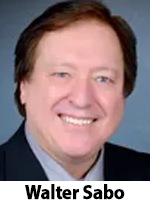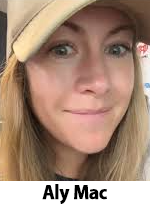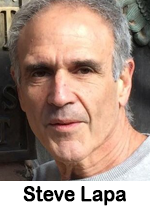SABO SEZ: Do You Really Think the Back of Your Head is Worth Watching?
By Walter Sabo
a.k.a. Walter Sterling, Host
WPHT, Philadelphia, “Walter Sterling Every Damn Night”
and TMN syndicated, “Sterling on Sunday”
 The drive to stream video of radio shows has always been risky. Remember your shock when you first saw one of your radio heroes? Video streaming can present a constant disconnect between the show in the listener’s head and the show on the stream. Many stations make the disconnect worse by streaming terrible video images. Combine the trauma of how a host really looks with a dreary TV show and the package cannot benefit the relationship between station and listener/viewer.
The drive to stream video of radio shows has always been risky. Remember your shock when you first saw one of your radio heroes? Video streaming can present a constant disconnect between the show in the listener’s head and the show on the stream. Many stations make the disconnect worse by streaming terrible video images. Combine the trauma of how a host really looks with a dreary TV show and the package cannot benefit the relationship between station and listener/viewer.
Too many stations stream from one or two fixed cameras in the studio. That picture looks like a police interrogation room. Some stations embarrassingly use one camera on a two person show. The result is a shot of the face of one host and the back of the head of the other, for the entire show. OMG.
Done right, video should enhance the listening experience, it should make the hosts more attractive, more engaging, and more entertaining.
Mistake: Many radio hosts ignore the cameras during spot breaks. These hosts go silent during spots, giving a viewer absolutely no reason to stream. Obviously, if one sits in silence during the break the image presented is pure boredom. On the radio, the listener hears commercials. On their stream they see a silent radio host doing nothing. Double disappointment.
Producing video that enhances a radio show experience takes planning and commitment. One technically simple way to make video work for a host is to address the audience directly during commercial breaks. One on one. The moment a break starts, smart hosts and anchors address the camera and candidly speak with the viewer. Their conversation is topical, urgent and fun.
Engaging the viewer during radio commercial breaks provides added value to a stream and a reason to watch.
Some examples worth watching are found in these links:
— B-93, Grand Rapids morning host Aly Mac never stops talking with streaming viewers. She does it right, two shows… one on the radio, one on the stream. Seamless and fun.
right, two shows… one on the radio, one on the stream. Seamless and fun.
— WPHT produces a TV show with switching, graphics that flows with the radio show.
— Baylee Martin is a TV anchor who could teach the industry how to conduct an on-air show enhanced by the stream. Hearst should sell schedules in her stream content. Have a look, she’s a streaming savant.
When streaming, consider if the video stream is helping or hurting the radio show. If the “reveal” is the back of a head, hurting!
Walter Sabo has been a C Suite action partner for companies such as SiriusXM, Hearst, Press Broadcasting, Gannett, RKO General and many other leading media outlets. His company HITVIEWS, in 2007, was the first to identify and monetize video influencers.. His nightly show “Walter Sterling Every Damn Night” is heard on WPHT, Philadelphia. His syndicated show, “Sterling On Sunday,” from Talk Media Network, airs 10:00 pm-1:00 am ET, and is now in its 10th year of success. He can be reached by email at sabowalter@gmail.com.



 Let’s talk streaming because I don’t get what is happening. Maybe you do.
Let’s talk streaming because I don’t get what is happening. Maybe you do.